RARE! WWII Saipan SECRET Marked B-29 Airfields Pacific Theater Operations Map
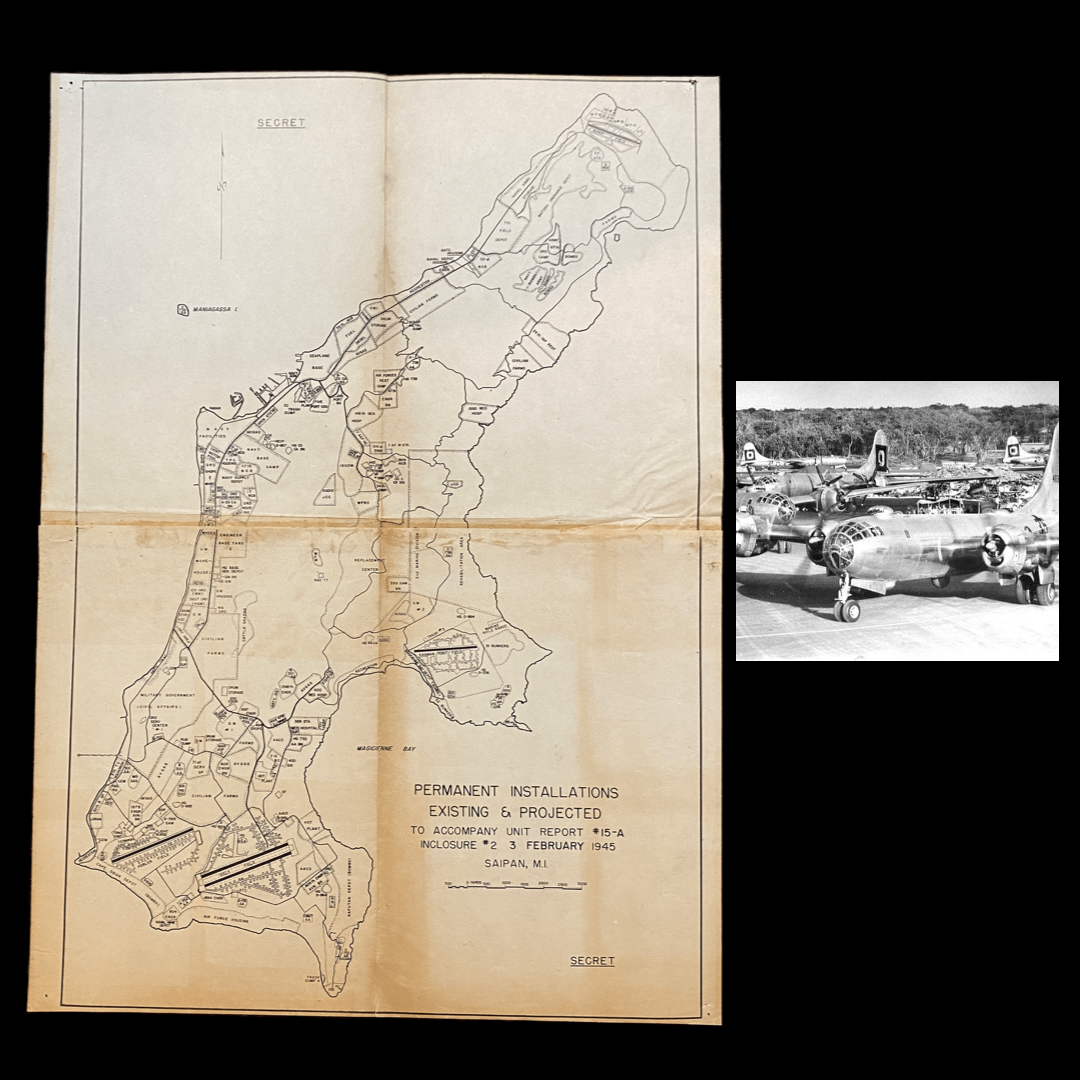

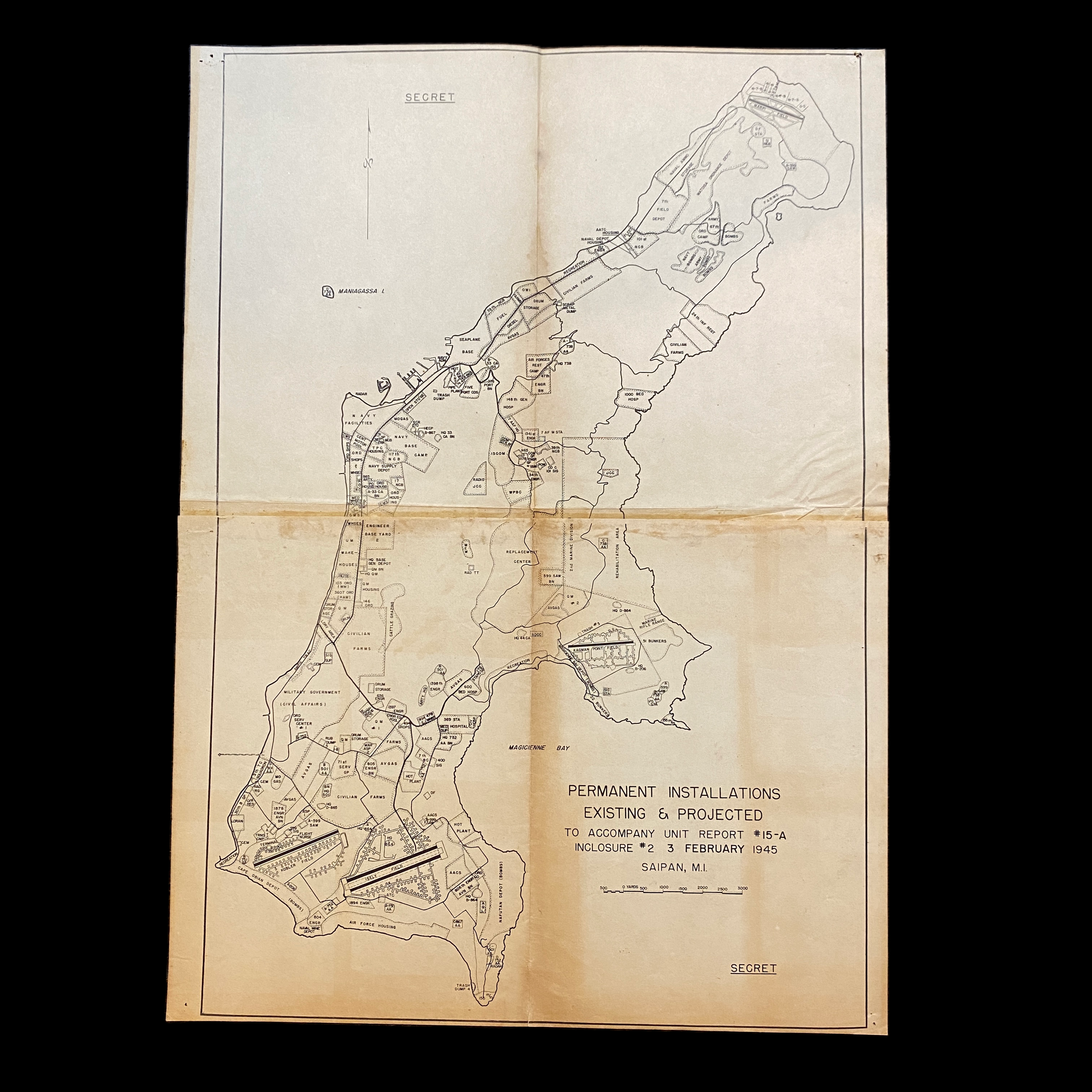


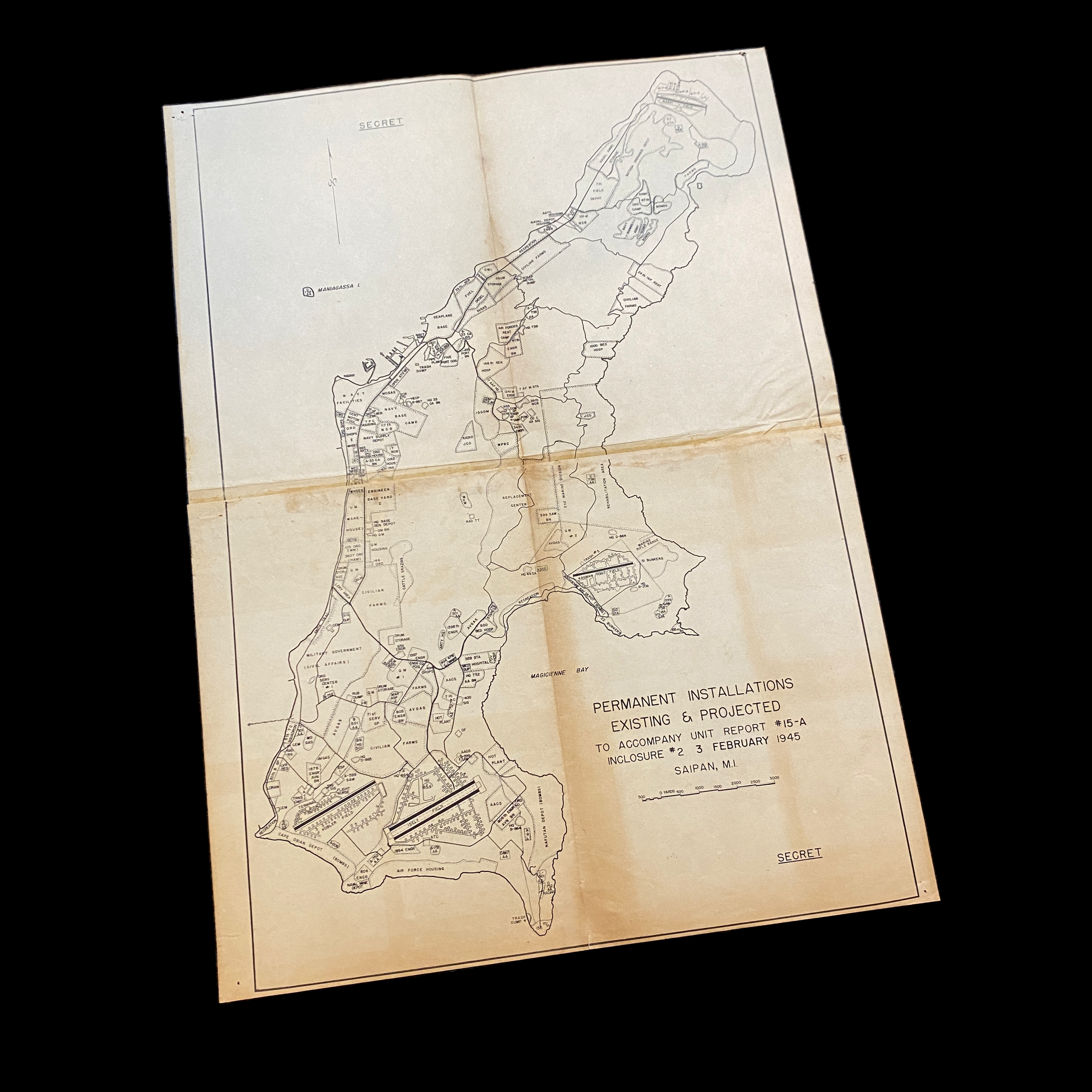




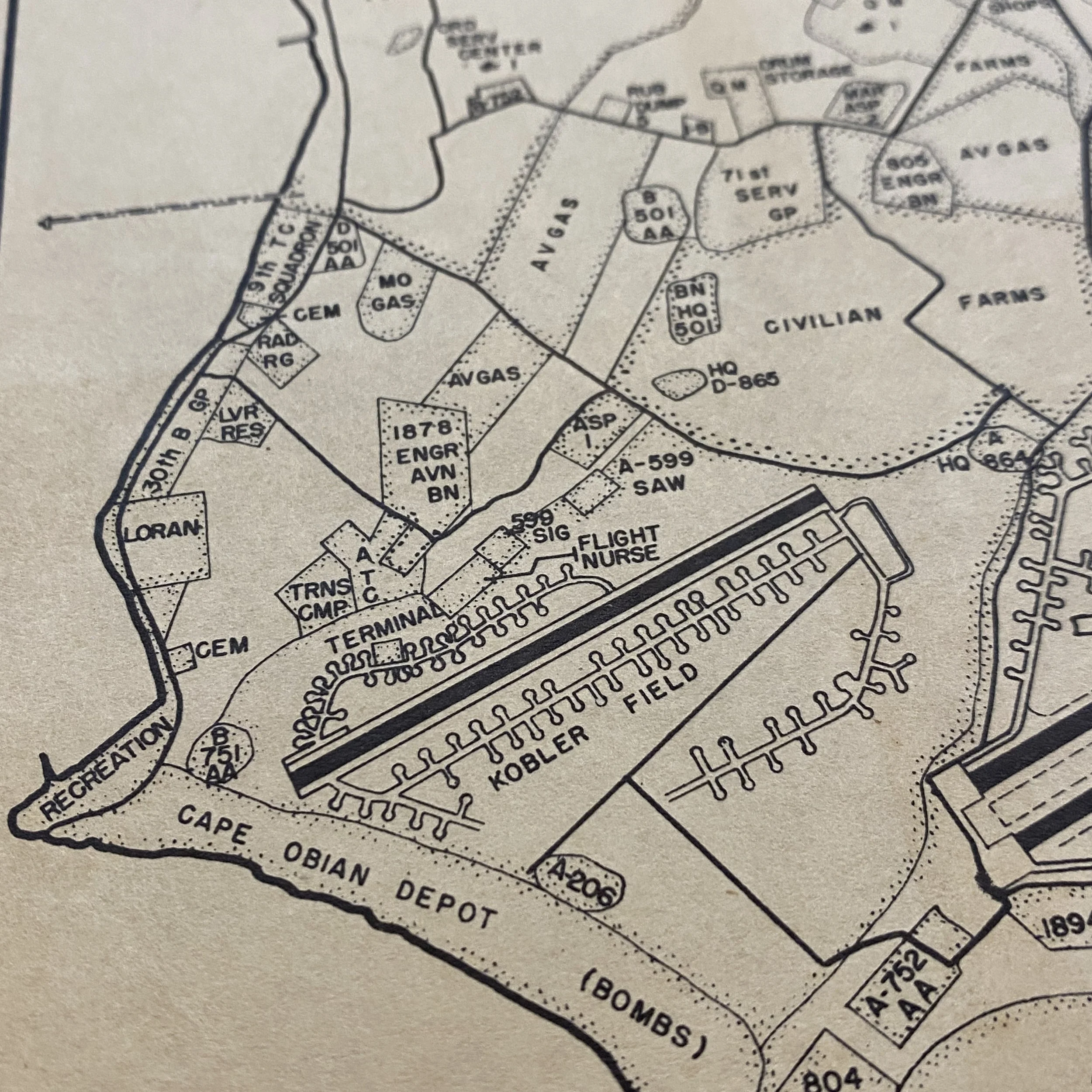











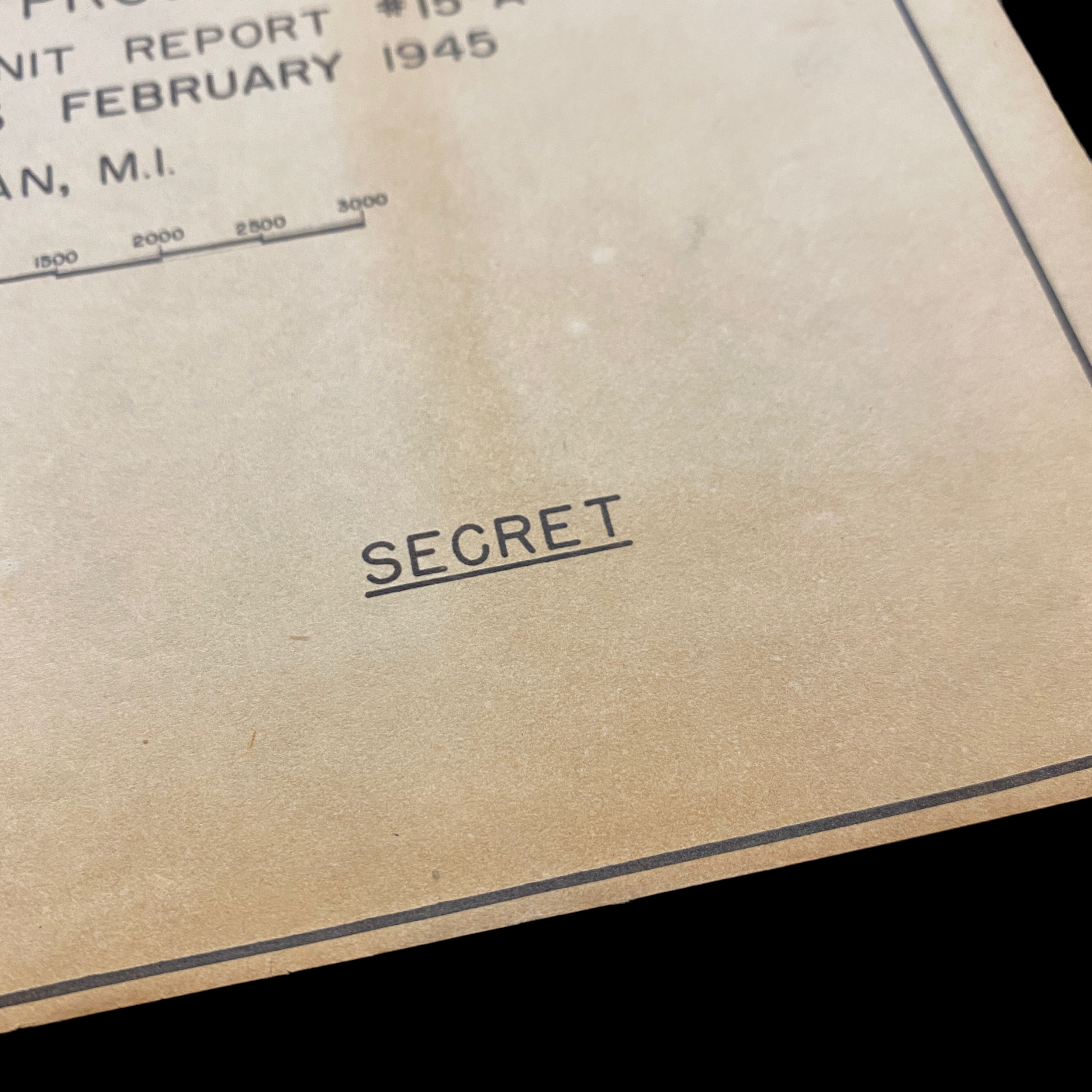
RARE! WWII Saipan SECRET Marked B-29 Airfields Pacific Theater Operations Map
Comes with hand-signed C.O.A.
This incredible and museum-grade World War II map of Saipan is labelled SECRET and shows U.S. military installations and construction efforts for the new B-29 bomber airfields.
With the capture of Saipan, the American military was now only 1,300 miles away from the home islands of Japan. U.S. Marine Corps General Holland Smith said: "It was the decisive battle of the Pacific offensive…it opened the way to the Japanese home islands."
The victory would prove to be one of the most important strategic moments during the war in the Pacific Theater, as the Japanese archipelago was now within striking distance of United States' B-29 bombers.
From this point on, Saipan would become the launch point for retaking other islands in the Mariana chain and the invasion of the Philippines in October 1944. Four months after capture, more than 100 B-29s from Saipan's Isely Field were regularly attacking the Philippines, the Ryukyu Islands and the Japanese mainland. In response, Japanese aircraft attacked Saipan and Tinian on several occasions between November 1944 and January 1945. The U.S. capture of Iwo Jima (19 February – 26 March 1945) ended further Japanese air attacks.
Construction of the B-29 airfields on Saipan began almost immediately, even while the fighting was still going on. Naval Construction Battalions (N-C-B), the "SeaBees" began construction at a former Japanese airstrip called Aslito. This was later renamed Isley Field, after Navy Commander Robert H. Isely (unfortunately his name was misspelled and the incorrect version stuck). The SeaBees did not meet their schedule but came very close. In a little over three months they had built a support base and air field on Saipan, capable of supporting the 240 B-29s of the 73d Bombardment Wing and their logistical support units.
On Tinian, the SeaBees built the largest bomber base ever, North Field. The 6th Naval Construction Brigade built four 8500-foot runways for the 313th Bombardment Wing, and all required infrastructure; then went to the west end of the island and at West Field laid down two 8500-foot runways for the 58th Bombardment Wing.